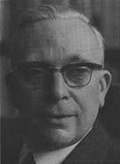
Boni 1966
Felicia – Een Jeroen Bosch-roman (Armand Boni) 1966
[Novel, D.A.P. Reinaert Uitgaven, Brussels, 1966, 231 pages]
In 1967 father Gerlach wrote about the ‘Bosch novel’ Felicia by the Flemish priest and author Armand Boni: ‘Nothing is more desastrous for a true understanding of the character and work of our Brabantine painter (…) than the historical novels, or what are supposed to be historical novels’ [P. Gerlach O.F.M. Cap., “De interpretatie van Jeroen Bosch”, in: Brabantia, vol. XVI (1967), p. 185]. Obviously father Gerlach was right from an art-historical point of view. But also the sheer literary quality of the book – which father Gerlach could not and did not want to evaluate – is rather mediocre. The main reason for this is the following.
In the first 219 pages Boni puts himself out to present Bosch as a man who was completely traumatized because of his marriage: his slightly frigid wife Felicia only gives birth to dead or misshapen babies. Jeroen blames this on his own, so-called diabolical obsession and he works it off in his paintings. We then read things like these: ‘I will have many naked women tortured, thinks Bosch, washing the dripping blood from his face and anxiously observing the spasms of Felicia’s body; I will paint the pains of hell, pierce breasts and bellies and genitals with arrows and forks, but I will cherish your body, Felicia, as the soft shadow of death’ [p. 152].
At that moment we have already become familiar with Dionysius the Carthusian (whose sermon in the St. John’s is one of the better fragments, historically and literarily speaking), Bosch has travelled to France where he had contact with the Coquillards and with some prostitutes, his wedding was arranged by dean Paulus (Bosch’s parish priest who protects Jeroen and whose alchemical laboratory Jeroen inherits) and he has won the favour of the young duke Philip the Fair. Dean Paulus’ successor (dean Ansgar, who is secretly in love with Felicia) accuses Jeroen of heretical ideas but thanks to the duke all ends well for the painter. Somewhat later Felicia barely survives her third confinement.
Then (ten pages before the end of the novel) Boni has Jeroen Bosch risen from a coma: his wife Aleid is now sitting next to his sickbed and dean Willem Hameker tries to convince him (Jeroen) that he has always been a faithful member of the Fraternity of Our Lady. Jeroen and Aleid retire on their country estate ‘Het Rodeken’ in Oirschot but the next winter they return to the city, where the artist dies shortly after.
Of course this clever device unsettles the preceding 219 pages: it were all nothing but feverish images in Bosch’s (rich) imagination resulting in the justification of Boni’s historical romanticizing (all the troubles with Felicia, Bosch experimenting with alchemy, the travels to France…). But at the same time the sporadical elements that did have a historical foundation (Bosch looking at miniatures, Bosch painting the Haywain and the Garden of Delights…) are also sidetracked.
For the reader this ambiguity results in: confusion, incomprehension and the feeling of having been kept up in the air for 219 pages in a way that shows but little literary skill.
Other reactions
[explicit]